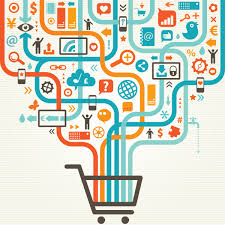Gazing into the customer’s mind has never been more accessible, and retail companies are taking notice of this and acting up. Big Data is a modern crystal ball which can help eCommerce actors make the most of their offer, pinpoint their niche with high accuracy and reach the right people through their preferred channel. There is a circular relationship between eCommerce and Big Data. Outcomes are reintroduced into the system to calibrate it and create excellent persuasion tools.
A Three-fold Strategy to Leverage Big Data
Getting the most out of Big Data for eCommerce should include a three-directional approach: being as customer-centric as possible, building the marketing funnel around insights and adjusting business operations according to the market’s signals.
Striving to Be Customer-centric
The fact that retail has now moved to a different environment doesn’t change the underlying human drives which are to feel appreciated and to belong. A successful eCommerce retailer will tap into the same emotions as a salesman from a century ago. Jeff Bezos’ dream of creating a small-town shop experience for millions of customers is happening thanks to Big Data.
The information retrieved from the customer’s interaction with a webpage, search engine or social media profile is just like bread crumbs leading the marketer to this customer’s profile. Aggregating millions of such profiles highlights behavioral patterns that could indicate preferences or future actions. There is currently a tradeoff happening between privacy and personalization. Sometimes, the fact that the same advertisement is haunting you on multiple channels can be disturbing, yet it is just a way of saving your time and increasing the vendor’s ROI.
The focus on the customer is the motivation behind recommendation engines and hyper-personalization. The unique combination of data provided by a particular customer can make them the perfect candidate for a discount. Even loyalty programs are not centered anymore on products or generic actions such as collecting coupons, but are tailored to reflect the customer’s interaction with the brand and to provide incentives for the customer to reveal even more information about themselves.
Sliding down the Marketing Funnel
But why does a company need so much data? Where does it come from and where does it go? The best way to keep track of it is to follow the marketing funnel. Here is the description of its stages and recommended actions on retailers’ side.
- Awareness – By laser-point segmentation, the company only shows tailored ads to a selected group of people who are likely to become paying clients. Even the copy and creative of such an ad can change dynamically to reflect the preferences of the viewer and speak to them at a personal level. The relevant data here comes from SEO and SMM. Information is recorded on the advertising platform and the landing site’s analytics and can be used to evaluate the campaign’s success.
- Interest – After clicking an ad or visiting the website, the potential customer is reminded of the brand through various channels like social media, email or ads on relevant websites. The most important metrics for this stage are the click rates, bounce rates and time spent on site. Additional information can show demographics and connected interests.
- Intent – If they have added a product to the cart but abandoned it, a friendly reminder could help to convert. Also, recommending similar or complementary products, sometimes in a different price range, offering a discount or free shipping can get the relationship to the next level. Make sure abandonment is not due to the geolocation where shipping is not available.
- Decision – Although 84% of buyers decide during their first visit, it takes up to 10 online sources to be sure. Case-studies, demonstrations, independent reviews and explanations can contribute to a positive outcome. Scan through social media, review sites and do a web scraping to see what past customers are saying about your brand. Reach out to dissatisfied clients.
- Customer – Once a lead becomes a customer, it is time to welcome them into your tribe by a well-thought-out message that can also include personal information to show them that you really paid attention to their needs. Don’t be afraid to re-target your existing customer database with relevant items. Create surprise deals and get personal. Don’t only celebrate their birthday, but also the day they have become your customer.
- Retention – Some Big Data models predict churn, which in eCommerce can be prevented by renewal campaigns. E-commerce specialists from Iflexion report that 78% of people will repeat buying if they receive a personalized offer. Also, be sure to engage with your tribe often and ask for their input and advice. Become an expert problem handler and don’t just look at dissatisfaction percentages, go in depth and learn from each case.
- Evangelism – A happy customer is the best marketing asset. Invite those who are most satisfied with your product to become brand ambassadors. Create frameworks like pages and hashtags where they can preach their love for your product and reward them. Add, aggregate and share these positive impressions.
Enhancing Business Operations
The plethora of data you collect can also provide excellent business operations insights, like where to open a new brick-and-mortar store, or where to hire another warehouse for timely distribution. Customer behavior, churn rates and frequent complaint reasons can act as leads in optimizing processes and trigger money savings.
If you are collecting various data from sensors, CCTV cams or by analyzing customer feedback, you can create new products, services or bundles. For maximum personalization, it is best to invite the ones who inspired you to test it first and share their thoughts.
Long-term Strategy
Don’t get absorbed in the magic of Big Data, better take a step back and look at the whole ensemble. Create an overarching plan that includes both online and offline components. Use personalization techniques and super-segmentation to optimize the spending of your marketing budget, but don’t forget the personal touch once a customer has already bought an item, without worrying you are old-fashioned if you include a hand-written note.
With so much data available you can engage with your customer on a very personal level, don’t be a stranger. As a rule of thumb, aggregate positive results, but take an individual look at negative ones.










